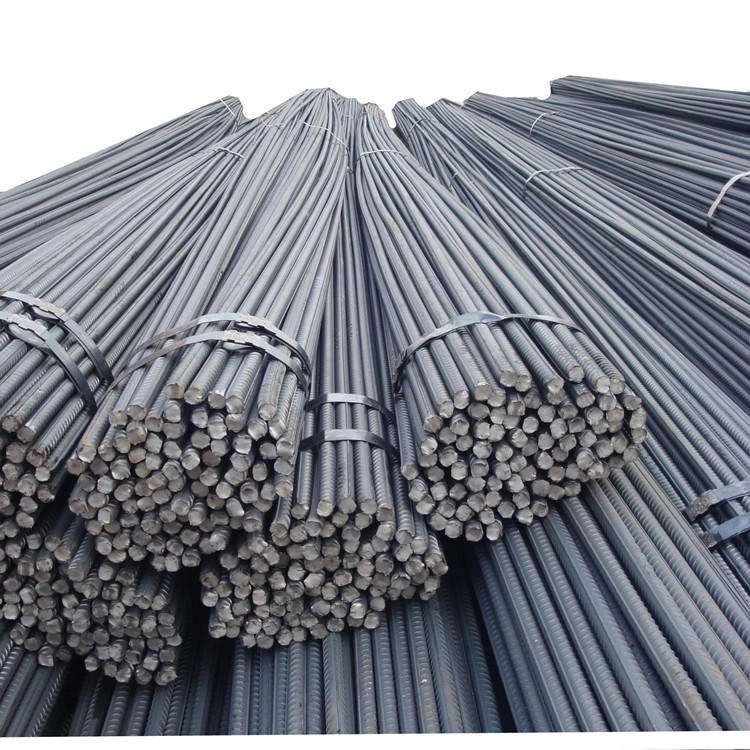Understanding Steel Rebar
What’s the Deal with Steel Rebar?
Steel rebar—short for reinforcing bar—is basically a steel rod or wire mesh that toughens up concrete and brick structures. Why’s it needed? Concrete’s a beast at handling squishing forces, but it’s kinda wimpy when things pull it apart. Rebar jumps in to take that tension. Most rebars have ridges, like little grips, that lock tight with the concrete. That extra hold keeps everything super sturdy.
Why Rebar’s a Big Shot in Building
How do skyscrapers and bridges stay up? Rebar’s the unsung hero. Concrete’s great for compression, but it flops under pulling forces. Pop in some rebar, and boom—you’ve got a dream team. Concrete takes the squeeze; rebar handles the stretch. Together, they make stuff like dams, roads, and towers that don’t budge.
Rebar also spreads weight around so no spot gets too stressed out. That stops cracks or worse—collapses. Plus, good rebars fight rust, keeping things solid for ages. You can’t build big without it.
What Gives Rebar Its Muscle
The Stuff It’s Made From
What makes rebar so tough? It’s all in the mix. Most are carbon steel—strong but bendy enough to shape. Throw in some manganese, and it gets harder and grippier. Chromium’s like a rust shield. Grades like Q235B and Q345B, used in H-beams, pop up in rebars too. They’re built to pass strict building codes with flying colors.
How It’s Crafted to Stay Strong
Making rebar’s a whole thing. They start with hot rolling—heating steel chunks and squashing them into rods. Want it even tougher? Thermomechanical treatment (TMT) tweaks it with hot-and-cold cycles for extra strength. It’s like baking a cake just right.
Welding’s key, too. Like H-shaped steels get welded super carefully to avoid weak bits, rebars are made with precision to take on heavy loads. Solid crafting means rebar that won’t let you down.
Grades and Rules to Check Strength
Rebars get graded by their yield strength—how much pull they can take before bending for good. Think ASTM A615 for the U.S. or BS4449 for the UK. These rules make sure rebars are legit, so builders everywhere get the same quality.
Types of Super Tough Rebar
High-Strength Deformed Bars
These bad boys have ridges that grip concrete like nobody’s business. High-strength deformed bars are perfect for big jobs—bridges, skyscrapers, you name it. They’re crazy strong and won’t slip, making them a fave for serious builds.
Stainless Steel Rebar: Rust’s Worst Enemy
Stainless steel rebars are like rust-proof ninjas. They cost more, but they shrug off corrosion in wet or salty spots like beaches. Stuff like 316L stainless steel’s got strength and staying power, ideal for ocean-side projects.
Epoxy-Coated Rebar: Extra Armor
Epoxy-coated rebars come with a shield against water and nasty stuff like road salts. They’re awesome for parking decks or bridges where rust’s a worry. That coating keeps them kicking for years.
Carbon Steel Rebar: Cheap and Cheerful
Carbon steel rebars are the budget-friendly champs. They’re strong, versatile, and everywhere. Only downside? They need a coating or treatment in rusty spots to keep going strong. Still, they’re a solid pick for most jobs.
Where These Tough Rebars Show Up
Big Builds That Love High-Strength Rebars
High-strength rebars are the backbone of huge projects. Think bridges, highways, or sky-high towers. Those ridges hug the concrete tight, spreading weight so no spot’s overwhelmed. They’re ready for wild stuff like cars zipping by or earthquakes rattling things. Grades like Q235B and Q345B are stars here, tough enough for any stress.
Stainless Steel Rebars by the Sea
Building near the ocean? Stainless steel rebars are your go-to. Saltwater and damp air eat most metals alive, but 316L stainless steel doesn’t blink. You’ll see these in piers, seawalls, or offshore rigs. They’re pricier, sure, but they save you from constant repairs.
Epoxy-Coated Rebars in Rough Spots
Got chemicals or road salts messing things up? Epoxy-coated rebars got you. Their coating blocks out moisture and corrosion, perfect for city parking lots or factories. They keep structures solid even when things get harsh.
Picking the Best Rebar for Your Gig
Stuff to Think About When Choosing
Picking rebar’s not a one-size-fits-all deal. Here’s the rundown:
- Where’s it going?Wet or salty? Stainless steel’s your rust buster.
- How heavy’s the load?Big structures? High-strength deformed bars got the guts.
- Cash tight?Carbon steel’s easy on the wallet but might need extra care.
- How long’s it gotta last?Epoxy-coated or stainless steel’s built for the long haul.
Every job’s unique, so a quick chat with experts can nail the right choice.
Costs vs. Perks Breakdown
Here’s how the money shakes out:
- Carbon Steel Rebars: Cheap, strong, but need rust protection in tough spots.
- Stainless Steel Rebars: Spendy upfront, but they save big on fixes with their rust-proof magic.
- Epoxy-Coated Rebars: Middle of the road—good protection without breaking the bank.
- High-Strength Deformed Bars: A bit more dough, but worth it for must-hold-up builds.
Qingdao Sunrise New Materials Co., Ltd. hooks you up with custom rebar that’s spot-on for your project, backed by killer quality.
FAQs
- What’s the hype with stainless steel rebar?
It’s a rust-kicking pro with mega strength, perfect for beaches or damp zones. - How’s epoxy coating make rebar last?
It shields out water and chemicals, keeping rust away for ages. - Why go for high-strength deformed bars?
Their ridges grab concrete tight, making structures crazy strong. - Carbon steel rebars cool for all jobs?
They’re cheap and handy but need rust-proofing in salty or wet places.
Need rebar that fits your build? Hit up Qingdao Sunrise New Materials Co., Ltd. for top-shelf, custom solutions.








